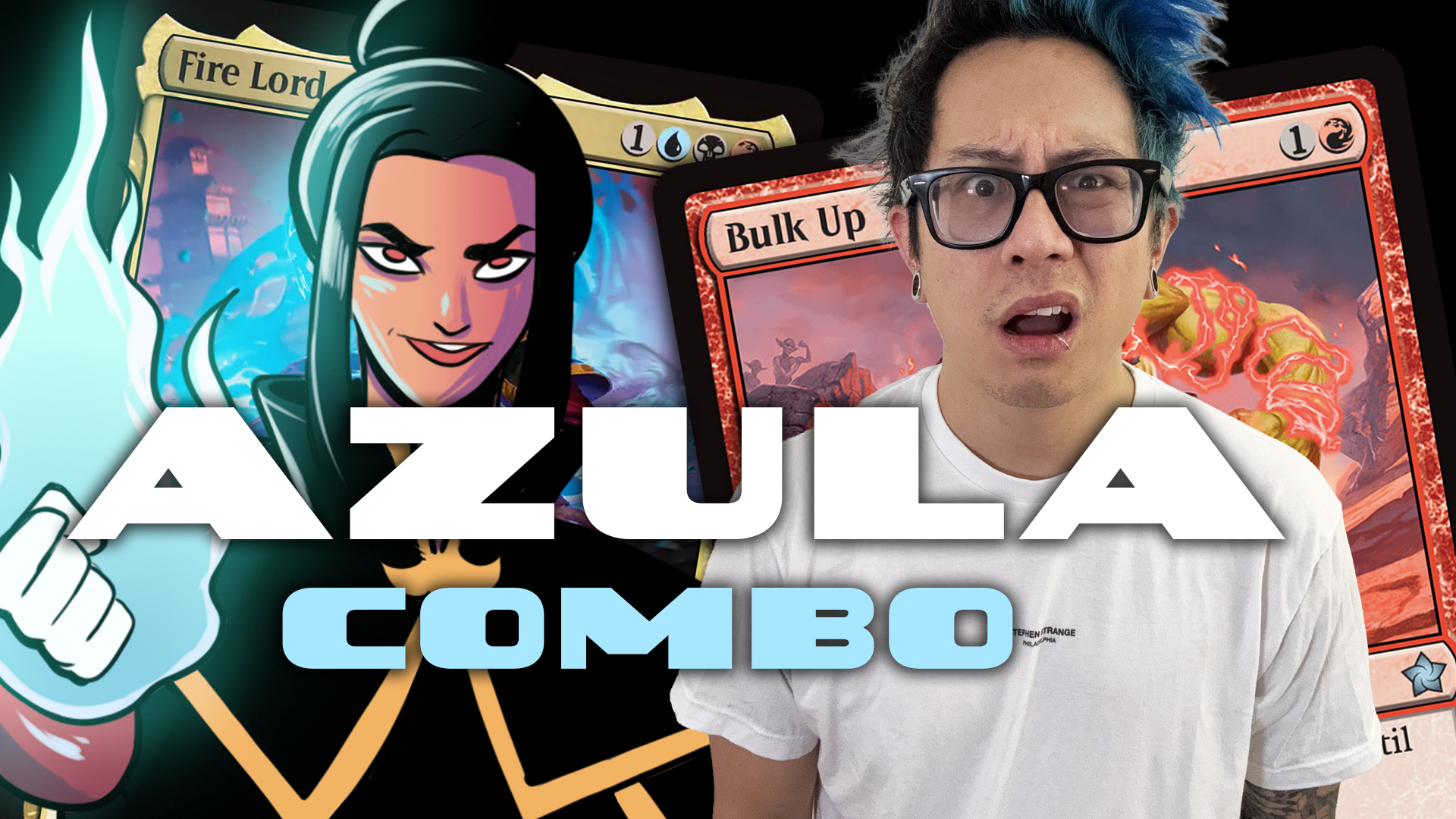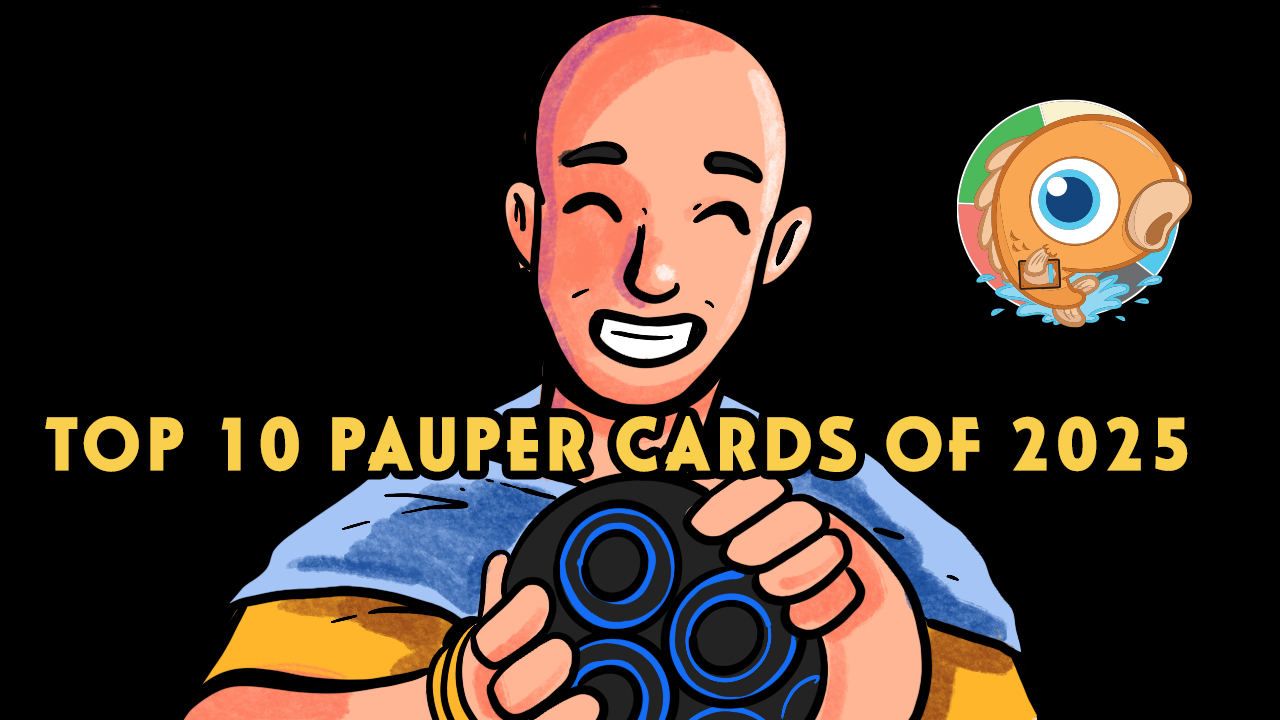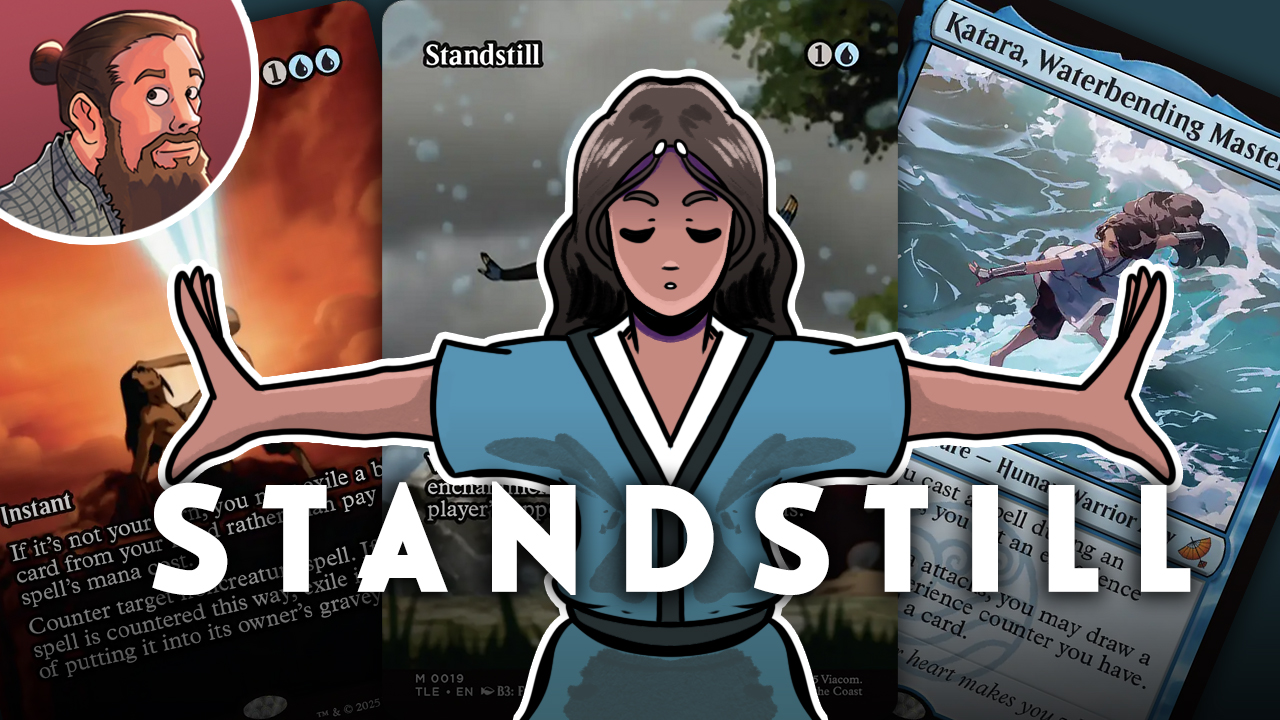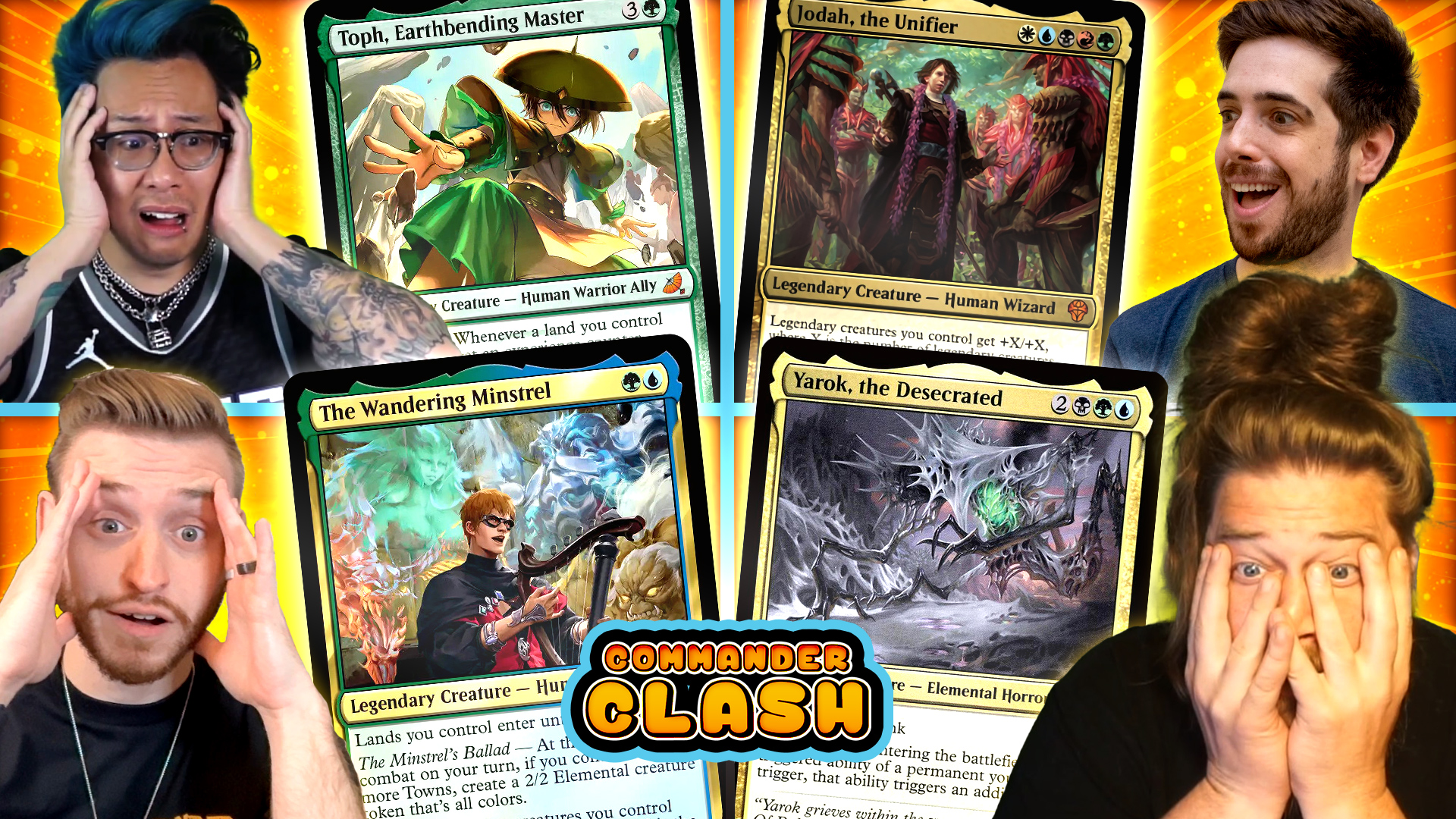Ranking the Companions from Ikoria
Now that we have the full spoiler for Ikoria, it's clear that the set has some of the most unique mechanics in Magic's history. While this will (hopefully) make for fun and challenging gameplay, it also makes it really difficult to evaluate the power level of many of the new cards since we're lacking historical comparisons and context. Perhaps the most unique mechanic in Ikoria is companion, which allows you to essentially start with an extra card in your hand (your companion) but only if you meet a certain restriction during deck building. Obviously, getting to start with eight cards in hand compared to your opponent's seven is powerful on its face, but is this extra card worth jumping through the necessary hoops to meet the companion deck-building requirement?
The answer to this question mostly depends on the companion itself. Some of the companion restrictions are fairly easy to meet, while others require massively warping your deck. Essentially, companions are a question of opportunity cost. In most cases, playing a companion will cost you the opportunity to play some other cards that you probably want in your deck. Which companions have a benefit that outweighs this cost? Which companion is best for constructed play in formats like Standard, Pioneer, and Modern? Let's count them down from worst to first!
#10: Lutri, the Spellchaser

While it ranks as the companion that people would most like to have for a pet thanks to its cuteness as an Elemental Otter, when it comes to power level, Lutri, the Spellchaser comes in at the bottom of our companion list. Being pre-banned in Commander certainly doesn't help Lutri's case since its companion restriction of playing a singleton deck isn't really a restriction at all in Commander, where you play a 100-card singleton deck anyway (which is exactly why it was banned). In non-Commander formats where Lutri, the Spellchaser is legal, it's simply not anywhere near strong enough to make it worth greatly reducing the consistency of your deck. If Lutri, the Spellchaser had an ability that actually rewarded you for jumping through the huge hoop of playing all one-ofs, it might have a chance in constructed formats, but being a bad version of Dualcaster Mage that can only target your own spells and comes with the additional safety valve of only working if you actually cast Lutri (taking blink shenanigans off the table) just isn't enough of a reward compared to the high cost in consistency you pay for making Lutri, the Spellchaser your companion.
#9: Umori, the Collector

Umori, the Collector is interesting. Many decks across formats come close to meeting its "all nonland cards in your deck must share a card type" restriction, but most of these decks need a handful of cards of other types to really function. For example, playing a deck that's almost all creatures is easy, but skipping out on any spell-based removal, interaction, or planeswalkers at all becomes problematic. Basically, what holds Umori back is opportunity cost. You're giving up access to Nissa, Who Shakes the World in your green mostly creature deck or Emry, Lurker of the Lock from your mostly artifact deck. Is a more expensive Cloud Key that dies to creature removal worth the cost? For almost all decks, the answer is no. While card types like enchantments or artifacts do help to minimize Umori, the Collector's drawback since there are artifact / enchantment creatures and removal spells, making it possible to make a semi-functional deck with Umori as its companion, even in these cases, a decent body that offers a slight discount on your spells doesn't seem worth the effort. If Umori, the Collector ever does make an impact on tournament tables, it will most likely be as part of a combo deck that wins on the turn when Umori, the Collector hits the battlefield. While I don't think such a deck exists at the moment, I wouldn't completely write off the possibility of it eventually happening, but for the time being, Umori ranks near the bottom of our list.
#8: Gyruda, Doom of Depths

While being a 6/6 for six with a potentially powerful enters-the-battlefield trigger means that there might be a chance that Gyruda, Doom of Depths will see a bit of play in main decks, and Commander decks built around Demons or Krakens will probably play a copy, Gyruda, Doom of Depths isn't great as a companion. Playing a deck with only even–converted mana cost cards is going to lead to all sorts of curve problems. While skipping one-drops is doable, especially in slower decks, not being able to play three-drops as well means that playing Gyruda, Doom of Depths as your companion essentially means that you're guaranteeing you'll cast a maximum of four mana worth of spells (two two-drops) across the first three turns of the game, which is certainly too slow for older formats like Modern and Pioneer, and likely too slow for Standard as well. Can you imagine ever beating an aggro deck with this curve? I didn't think so. (Editors note: this section has been updated to reflect the fact that you can play two two-drops with Gyruda over the first three turns of the game).



If Gyruda, Doom of Depths does have a chance of showing up as a companion in Standard, it will likely be in a ramp-style shell. The one way to break it's cruve-based drawback is to have your turn two play be a ramp spell (like Growth Spiral, Incubation Druid, Paradise Druid) which in turn allows you to play a four-drop on turn three. Spark Double also seems key, since Gyruda, Doom of Depths triggers whenever it enters the battlefield if you can mill a reanimate a Spark Double you can make a non-lgendary copy of Gyruda, Doom of Depths, giving you another enters the battlefield trigger to repeat the process.
#7: Obosh, the Preypiercer

So why does Obosh, the Preypiercer rank ahead Gyruda, Doom of Depths even though their companion restrictions mirror each other? The answer here is that it is much, much easier to build a functional deck with all odd–converted mana cost cards than it is to build one with even–converted mana cost cards. As we talked about before, the issue with Gyruda, Doom of Depths is that, discounging a ramp spell on turn two, it locks you into only playing one spell for the first three turns of the game. Meanwhile, with Obosh, the Preypiercer's odd restriction, you should be fine if you overload your deck with one-drops. You can play a one-drop on Turn 1, two more on Turn 2, and then a three-drop on Turn 3 and function like a normal deck. Of course, most decks overloaded with one-drops don't play many five-drops or enough lands to cast five-drops with regularity, so everything isn't perfect in Obosh's world, but if either of the odd /even companions shows up in a competition deck, my money is on Obosh, the Preypiercer.
#6: Keruga, the Macrosage

There's exactly one deck in Standard that will probably want Keruga, the Macrosage: Jeskai Fires. For most decks, being restricted to only cards that cost three or more means that Keruga, the Macrosage has the same exact issue as Gyruda, Doom of Depths: you only get to play a single card over the first three turns of the game, leaving you in a position where you're often dead to aggressive decks (this gets even worse in older formats, which are faster and place a higher value on efficiency). However, Jeskai Fires naturally plays exclusively (or almost exclusively, depending on the exact build) cards that cost three or more mana anyway, with the plan being to fall behind on the early turns but catch up with sweepers and powerful creatures on Turns 3 through 5. Keruga, the Macrosage is close to a free roll in some builds of the deck, only costing a sideboard slot. Plus, it costs five mana, which is the sweet spot for Fires of Invention threats. While I would be surprised if Keruga, the Macrosage showed up in many decks, I would be just as surprised if it didn't show up in any, thanks to how easy it is for Jeskai Fires to play it as its companion.
#5: Jegantha, the Wellspring

Jegantha, the Wellspring is actually very similar to Keruga, the Macrosage, with the added bonus of being much easier to play in five-color Commander decks, where it shouldn't take too much work to meet the "no more than one of the same mana symbol" companion restriction, in that it already has an easy home in Niv-Mizzet, Reborn decks. While Niv-Mizzet, Reborn is lower tier in Standard (although the new Ikoria tri-lands might help bring it up a tier in the format), it's also a legitimate deck in both Pioneer and Modern. Across formats, all versions of Niv-Mizzet, Reborn decks either naturally meet Jegantha's restriction or can with very slight changes (mostly to their removal package, as the Modern and Pioneer builds often play a copy or two of Supreme Verdict). Even better, Jegantha, the Wellspring isn't just a free card in hand but actually does some powerful things in Niv decks, most notably tapping to cast Niv-Mizzet, Reborn itself (while being a 5/5 creature is also a nice bonus).


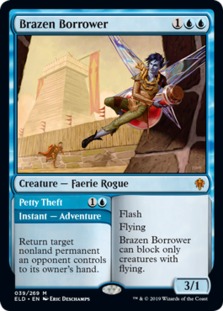
Outside of Niv decks, there are some Standard decks that come close to meeting Jegantha, the Wellspring restriction, but most have a small number of key cards that they probably can't afford to lose. For example, in Bant Midrange you lose Dream Trawler and Elspect Conquers Death. Sultai loses Casulties of War and Nissa, Who Shakes the World. Flash decks lose Nightpack Ambusher and Brazen Borrower. For these decks, the opportunity of playing Jegantha, the Wellspring is just too high, not because of the number of cards they can't play, but because of the power-level of the small number of cards that don't meet Jegantha, the Wellspring companion restriction.
On the other hand, there are some non-Niv decks in older formats that could probably use Jegantha, the Wellspring, the question is whether starting with a random 5/5 for five in hand is the best use of a sideboard slot. For example, Sulti Delirium in Pioneer would lose just Murderous Rider which could be replaced by another removal spell. The issue is that in older formats sideboard slots have a lot of value, so losing one is a real cost. In the end, my guess is that much like Keruga, Jegantha, the Wellspring isn't going to show up in most decks, but it will show up in one or two and will probably be very good in those shells.
#4: Kaheera, the Orphanguard

Kaheera, the Orphanguard is one of the hardest companions to rate. Its companion restriction—all of your creatures being Cats, Elementals, Nightmares, Dinosaurs, or Beasts—is actually very easy to achieve, either in tribal decks or in decks that play very few creatures (or even no creatures at all). A Cat, Elemental, or Dinosaur tribal deck is probably going to want to play all Cats, Elementals, or Dinosaurs anyway, so the opportunity cost of playing Kaheera as your companion in such a deck is low. Better yet, in a deck that meets its companion restriction, Kaheera, the Orphanguard is solid, being a three-mana lord with the additional upside of giving your team vigilance that essentially starts in your hand each game!
So, what's the problem with Kaheera? The answer here is that the tribes Kaheera cares about—Cats, Elementals, Dinosaurs, Beasts, and Nightmares—aren't especially strong in tournament formats. While we've played Cats a few times in the past and there have been Elemental tribal decks in both Modern and Standard at various points over the past year, in reality, all of the Kaheera tribes are somewhere between third-tier and unplayable. This leaves Kaheera, the Orphanguard orphaned—it's a powerful card, but it just doesn't have quite enough support to be broken. While people will certainly play Kaheera, the Orphanguard (with Cats and Elementals being the most likely immediate homes), over the short-term, Kaheera will probably be stuck as the best card in not very good decks. However, the fact that more Cats, Elementals, Nightmares, Dinosaurs, and Beasts keep getting printed every year means that I wouldn't be surprised if Kaheera, the Orphanguard ended up being quite strong over the long-term.
#3: Zirda, the Dawnwaker

Traditionally, cards like Zirda, the Dawnwaker are used as combo pieces (see: Training Grounds and Biomancer's Familiar). And while it is likely that Zirda, the Dawnwaker will see play in some fringe combo decks (probably involving Eldrazi Displacer and a creature that makes at least two colorless mana when it enters the battlefield, like Eyeless Watcher) as a normal main-deck card, which puts it ahead of several companions on our list, just how practical it is to build a deck where every permanent in your deck has an activated ability remains to be seen. While easy infinite combos like Basalt Monolith or Grim Monolith make Zirda one of the most powerful companions in Commander—potentially generating infinite mana as early as Turn 3—it seems difficult to pull off such combos in other formats, especially since the combo pieces are only legal in Legacy. Since Zirda, the Dawnwaker only cares about permanents, it could show up in a deck that is mostly (or exclusively) spells (people have mentioned this as a possibility in Vintage, where some decks incidentally meet Zirda, the Dawnwaker's restriction, although whether or not getting a random 3/3 in hand to start the game is worth a sideboard slot remains to be seen). Avoiding permanents is probably the easiest way to meet the restriction since playing a deck with a bunch of creatures while also ensuring each has an activated ability seems difficult. That said, cards like Golos, the Tireless Pilgrim and Kenrith, the Returned King work extremely well with Zirda, the Dawnwaker, and both mana dorks and planeswalkers are essentially free (since tapping for mana and loyalty abilities are both activated abilities), while cycling also counts as an activated ability. So it wouldn't be that big of a surprise for there to be a functional deck in Standard that could play Zirda as its companion, although I'm not sure just how good Zirda would be in such a deck.



The same might be true in Modern as well, although finding an efficient way to combo with Zirda, the Dawnwaker that also has an activated ability might be a challenge. Traditionally, combining Eyeless Watcher with Eldrazi Displacer is the best way to go infinite with a cost-reduction effect like Zirda's, although Eyeless Watcher itself doesn't have an activated ability. There is a replacement in Drowner of Hope, although costing six mana—rather than four, like Eyeless Watcher does—is problematic.

Of course, the biggest upside of Zirda, the Dawnwaker is that its cost reduction applies to all permanents (see: the Basalt Monolith / Grim Monolith combos for Commander), and some artifact-based decks come very close to accidentally meeting Zirda, the Dawnwaker's companion restriction (for example, Modern Urza decks often only have Uro, Titan of Nature's Wrath as a permanent without an activated ability), so the unique wording on Zirda might open up new possibilities, compared to Biomancer's Familiar and Training Grounds, that will take time to explore. It wouldn't be shocking to find a broken Zirda deck out there in a non-Standard format. The question is just how long it will take someone to find it.
#2: Lurrus of the Dream-Den

Lurrus of the Dream Den is undoubtedly a powerful card. Its static ability, which allows you to recast a cheap permanent from your graveyard every turn, does tricks similar to Emry, Lurker of the Loch with cards like Mishra's Bauble while offering additional flexibility by allowing you to cast non-artifacts as well. While running a deck with just permanents that cost two or less mana in Standard mostly limits Lurrus of the Dream Den to very aggressive shells, playing Lurrus, of the Dream-Den as your companion becomes much easier in older formats, which place a higher value on efficiency.


One easy example is Death's Shadow decks in Modern. They already have Mishra's Bauble, occasionally have ways to fill the graveyard like Thought Scour, and in general, the only card that doesn't meet Lurrus of the Dream Den's restriction is Street Wraith. Is starting with Lurrus of the Dream Den in hand each game better than being able to lose two life for free with Street Wraith? I'm not sure, but it at least seems possible.
If Lurrus is limited as a companion in Standard and doesn't have a pre-built Modern home, then why does it rank so highly on our companion list? The answer here is that Lurrus of the Dream Den is likely to revolutionize Legacy and possibly Vintage as well. Take a deck like Legacy ANT, for example:

As an all-spell storm combo deck, the only opportunity cost associated with playing Lurrus of the Dream Den in Ad Nauseam Tendrils is giving up a sideboard slot—the companion restriction is incidentally met. While just being a free card in hand might not be enough to push Lurrus of the Dream Den into ANT's sideboard, the Cat also works absurdly well with Lion's Eye Diamond, the main engine piece of the deck. Thanks to Lurrus of the Dream Den, you can cast all of your spells, use Lion's Eye Diamond to make three mana, use that mana to cast Lurrus of the Dream Den as your companion, and immediately recast Lion's Eye Diamond thanks to Lurrus's static ability, which means the floor of Lurrus in a deck like ANT is upping the storm count by two, which is probably enough for Lurrus to steal a sideboard slot all by itself. The same holds true for most other Storm variants in Legacy. And in Vintage, you get Black Lotus alongside Lion's Eye Diamond for Lurrus of the Dream Den shenanigans.
Being an auto-include in formats as powerful as Legacy and Vintage is a huge testament to the power of Lurrus and of the companion mechanic in general. If you're a Standard or Pioneer player, you'll likely still see Lurrus of the Dream Den played fairly in main decks. Its static ability is strong enough that Lurrus is a very playable card even when it isn't also a free eighth card in your starting hand. But in older formats, Lurrus of the Dream Den will get to shine as a companion. The question isn't whether Lurrus of the Dream Den is good; it's whether it is too good and ends up needing to be banned.
#1: Yorion, Sky Nomad
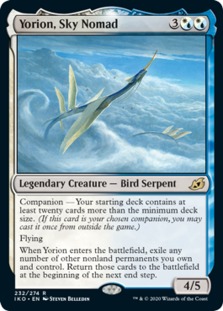
Magic players are taught from almost as soon as they start playing that they should never play more than 60 cards in their main deck; every extra card you add reduces your deck's consistency and makes it less likely that you'll draw your best cards early or often. However, Magic players have never really had a good incentive to build a deck with more than 60 cards outside of Battle of Wits.

The problem with Battle of Wits is that when you consider you will need 200 cards in your deck once it hits the battlefield and that it might take several (or many) turns to get Battle of Wits on the battlefield, you will need to play somewhere around 240 cards to make Battle of Wits work, which means you're increasing your deck size by 300%, which in turn leads to a massive drop in consistency, to the point where Battle of Wits simply isn't worth the cost in competitive decks.



Yorion, Sky Nomad is different. To play Yorion, Sky Nomad as your companion, you will only need to increase the size of your deck 33.3%, which means the cost of playing Yorion as your companion certainly isn't nonexistent—an 80-card deck will be less consistent than a 60-card deck—but it also isn't very high. If you already have good blink targets, like various Thassa, Deep-Dwelling decks in Standard, then Yorion, Sky Nomad is an incredibly powerful card to have access to in every game. The extra value you'll generate from blinking Elite Guardmage, Agent of Treachery, and friends (potentially every turn thanks to Thassa, Deep-Dwelling blinking Yorion, Sky Nomad to blink the rest of the team) will almost certainly more than make up for the drop in consistency you'll face from playing more cards in an absolute sense.
The scarier part of Yorion, Sky Nomad is that as 4/5 flier that gives you an additional card in hand to start the game, there's a decent chance that Yorion might be worth sticking 20 extra cards in your deck, even if you don't have a bunch of good blink targets. This isn't just true of Standard but Pioneer and Modern as well. While perhaps different now thanks to the London mulligan rule, in the past, people have calculated that your odds of winning when you mulligan to six (so starting with one less card than your opponent) is 40%, which might not sound like a lot, but considering that the odds are 50/50 with each player starting with an equal number of cards in hand, it's actually a 20% shift in your chances of winning the game. Starting with an eight-card hand thanks to a companion while your opponent starts with seven is actually pretty similar to the mulligan situation above. If the math is similar for companions—your chance of winning shifts from 50% to 60%—that's like going from being an FNM player to a Players Tour regular. It seems very unlikely that the consistency you lose from playing 20 extra cards will decrease your odds of winning by 10% or more, which would mean even discounting any specific Yorion, Sky Nomad synergy, it would be correct for a lot of decks to add some extra cards to meet the Bird Serpent's companion restriction.
Conclusion
Anyway, that's all for today. Personally, I think the companion mechanic has the potential to be one of the most broken mechanics added to Magic in a long, long time. Currently, people are underestimating the value of starting with an extra card in hand each game, but with the set being released shortly, I expect people will wake up to the mechanic's absurd power soon. But what do you think? How strong is the companion mechanic? What companion tops your personal list? Let me know in the comments! As always, leave your thoughts, ideas, opinions, and suggestions, and you can reach me on Twitter @SaffronOlive or at SaffronOlive@MTGGoldfish.com.


